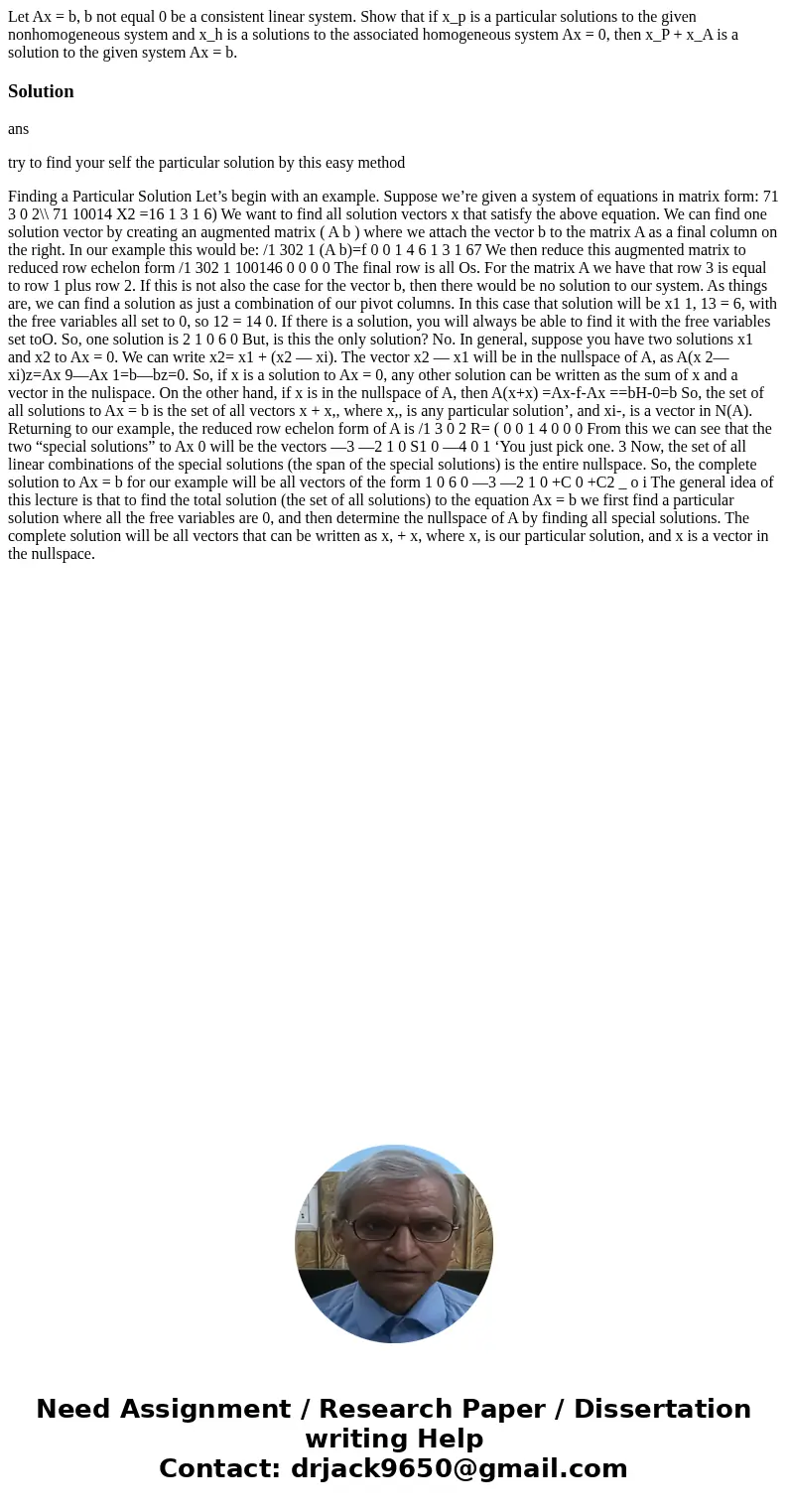Let Ax b b not equal 0 be a consistent linear system Show t
Solution
ans
try to find your self the particular solution by this easy method
Finding a Particular Solution Let’s begin with an example. Suppose we’re given a system of equations in matrix form: 71 3 0 2\\ 71 10014 X2 =16 1 3 1 6) We want to find all solution vectors x that satisfy the above equation. We can find one solution vector by creating an augmented matrix ( A b ) where we attach the vector b to the matrix A as a final column on the right. In our example this would be: /1 302 1 (A b)=f 0 0 1 4 6 1 3 1 67 We then reduce this augmented matrix to reduced row echelon form /1 302 1 100146 0 0 0 0 The final row is all Os. For the matrix A we have that row 3 is equal to row 1 plus row 2. If this is not also the case for the vector b, then there would be no solution to our system. As things are, we can find a solution as just a combination of our pivot columns. In this case that solution will be x1 1, 13 = 6, with the free variables all set to 0, so 12 = 14 0. If there is a solution, you will always be able to find it with the free variables set toO. So, one solution is 2 1 0 6 0 But, is this the only solution? No. In general, suppose you have two solutions x1 and x2 to Ax = 0. We can write x2= x1 + (x2 — xi). The vector x2 — x1 will be in the nullspace of A, as A(x 2—xi)z=Ax 9—Ax 1=b—bz=0. So, if x is a solution to Ax = 0, any other solution can be written as the sum of x and a vector in the nulispace. On the other hand, if x is in the nullspace of A, then A(x+x) =Ax-f-Ax ==bH-0=b So, the set of all solutions to Ax = b is the set of all vectors x + x,, where x,, is any particular solution’, and xi-, is a vector in N(A). Returning to our example, the reduced row echelon form of A is /1 3 0 2 R= ( 0 0 1 4 0 0 0 From this we can see that the two “special solutions” to Ax 0 will be the vectors —3 —2 1 0 S1 0 —4 0 1 ‘You just pick one. 3 Now, the set of all linear combinations of the special solutions (the span of the special solutions) is the entire nullspace. So, the complete solution to Ax = b for our example will be all vectors of the form 1 0 6 0 —3 —2 1 0 +C 0 +C2 _ o i The general idea of this lecture is that to find the total solution (the set of all solutions) to the equation Ax = b we first find a particular solution where all the free variables are 0, and then determine the nullspace of A by finding all special solutions. The complete solution will be all vectors that can be written as x, + x, where x, is our particular solution, and x is a vector in the nullspace.

 Homework Sourse
Homework Sourse